INTERNACIONAL
Día Mundial de la sepsis: el 85% de los casos y muertes ocurre en América Latina, África y Asia
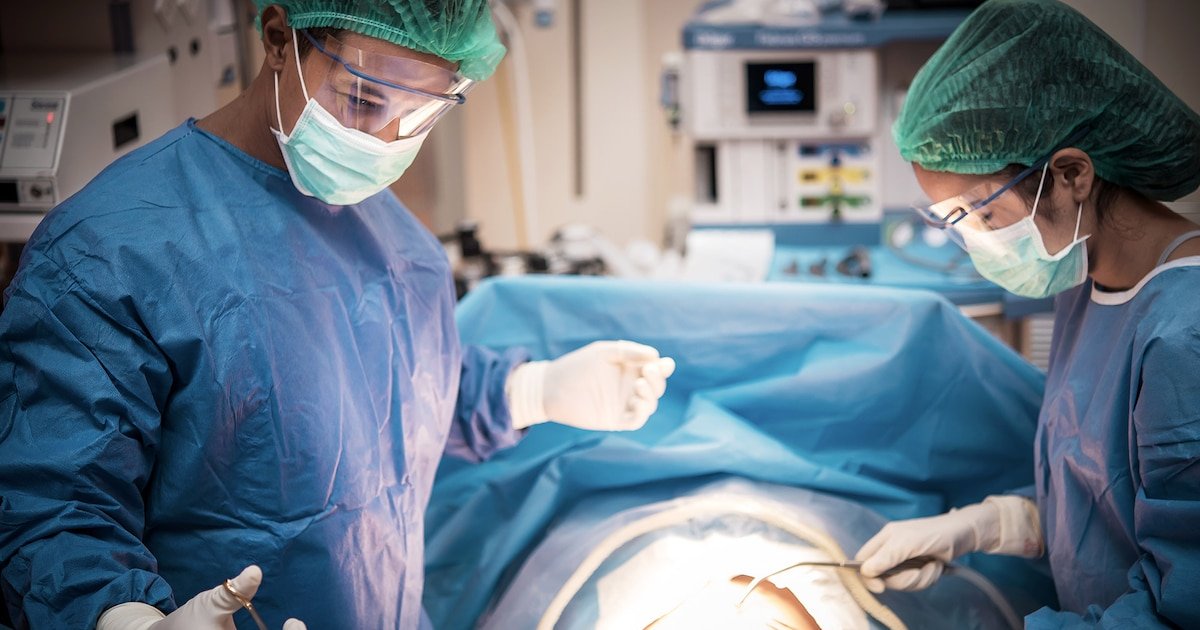
Cuando una bacteria, virus u otro patógeno entran en el organismo, el sistema inmune trata de defenderse.
Si esa reacción se sale de control, se desarrolla la sepsis, una afección que puede dañar órganos esenciales como el corazón, los pulmones o los riñones, y poner en riesgo la vida en poco tiempo.
Investigadores de Australia, Argentina y Canadá descubrieron que el 85% de los casos y muertes por sepsis ocurre en países pobres o de ingresos medios, como los de América Latina, África y Asia.
Muchas veces faltan recursos básicos como oxígeno, antibióticos o equipos para hacer pruebas importantes, según detallan en el estudio publicado en la revista Intensive & Critical Care Nursing.

Como cada año, hoy 13 de septiembre es el Día Mundial de la Sepsis. En 2025, el enfoque de la campaña de concientización global es más fuerte que nunca: reducir las muertes relacionadas con la sepsis y promover la prevención.
Con el aval de la Organización Mundial de la Salud (OMS), la Alianza Global de la Sepsis tiene una meta para 2030: busca reducir la incidencia mundial de la sepsis en al menos un 25 % y mejorar las tasas de supervivencia de los pacientes pediátricos y adultos en más de un 20 % con respecto a los valores de 2017-2020.
El nuevo estudio indicó que no siempre hay suficientes camas en terapia intensiva y a veces los familiares deben comprar los insumos médicos porque el hospital no los tiene disponibles para atender a las personas con sepsis.
Esto significa que, aunque puede afectar a cualquiera, el riesgo de morir por esta causa es mucho mayor en países donde los hospitales carecen de recursos.
Los investigadores Ged Williams, Laura Alberto (investigadora del Conicet y la Universidad del Salvador en Argentina), Maysa Taha y Elizabeth Papathanassoglou precisaron que “cincuenta millones de personas desarrollan sepsis en el mundo cada año y once millones mueren por esta enfermedad, el 85% de los casos y muertes ocurre en países de ingresos bajos y medianos”.

“Identificamos demoras sustanciales para que los pacientes con sepsis reciban pruebas y tratamientos fundamentales en países de bajos y medianos ingresos y reconocemos la necesidad permanente de cerrar la brecha de atención con los países de altos ingresos”, afirmaron los investigadores.
El gran desafío no sólo es hospitalario, pues la sepsis puede empezar cuando una persona se encuentra en su comunidad. La reacción tardía aumenta el riesgo de muerte.

“La sepsis aparece cuando el cuerpo reacciona de manera extrema ante una infección. Puede afectar a diferentes órganos y poner en peligro la vida», explicó a Infobae el médico Gustavo González, miembro del comité de Shock Pediátrico de la Sociedad Argentina de Terapia Intensiva y del Hospital de Niños “Ricardo Gutiérrez” de Buenos Aires.
La palabra sepsis es de origen griego y deriva de un término que describía la “descomposición de materia orgánica”. Sus primeras menciones se encuentran en los poemas de Homero.

Niños, adultos mayores y pacientes con enfermedades previas están más expuestos, especialmente si tienen barreras para el acceso rápido a la atención médica.
Los síntomas de la sepsis no siempre se reconocen rápido: fiebre, escalofríos, confusión, presión baja y dificultad para respirar pueden confundirse con otras enfermedades comunes.
Si un paciente muestra estos signos tras una infección, debe buscar ayuda profesional sin demora.

El tratamiento combina antibióticos y líquidos por vía intravenosa, y a veces requiere intervenciones intensivas.
Para conseguir una buena respuesta, la clave está en actuar lo más rápido posible, algo que los hospitales con recursos bajos y medianos muchas veces no pueden garantizar.

Antes de este estudio, la información sobre la sepsis y su tratamiento venía mayormente de hospitales en Estados Unidos y Europa.
Poco se sabía sobre lo que sucede en Asia, África y América Latina, donde los recursos y la infraestructura sanitaria son más limitados.
A la hora de llevar a cabo el estudio, los investigadores intentaron conocer cómo aplican los hospitales de esos lugares los protocolos internacionales de manejo de la sepsis.
El objetivo principal era entender las barreras que enfrentan los profesionales de la salud y el acceso real de los pacientes a los tratamientos.

Gran parte de la investigación se centró en la cantidad de camas de terapia intensiva.
Reveló que en Bangladesh solo hay 0,3 camas por cada 100.000 personas, en Sri Lanka 2,5 y en Estados Unidos 25. Esta enorme diferencia explica el alto número de muertes por sepsis en el Sur global.

Los investigadores elaboraron una encuesta de 17 preguntas, que fue enviada a personal de cuidados críticos en hospitales públicos de países catalogados como de ingresos bajos y medianos por el Banco Mundial.
Se seleccionó a los participantes a través de la World Federation of Critical Care Nurses y contestaron 93 profesionales de 66 hospitales en 24 países.
El relevamiento garantizó anonimato y fue aprobado por el comité de ética de la Universidad de Alberta, en Canadá.
La consulta indagó sobre acceso a recursos básicos, sistemas de alarma, capacidad de laboratorio y velocidad en el tratamiento.
También preguntaba por los obstáculos económicos que enfrentan las familias cuando no hay insumos en el hospital.

Tras hacer el estudio, se comprobó que se dan situaciones en las que el personal sanitario termina pidiendo a las familias que compre insumos o que directamente no realizan los procedimientos recomendados.
Solo el 38% de los hospitales tenía sistemas de alerta para diagnosticar la sepsis con rapidez.
El oxígeno estaba presente en el 72% de los hospitales, los pulsioxímetros (que miden el oxígeno en sangre) en el 93% de las terapias intensivas y en el 80% de las salas generales.
Los antibióticos eran accesibles, pero los estudios clave como el de lactato (que se utiliza para diagnosticar la sepsis) no se realizaban en uno de cada cinco centros de atención.

“Muchos hospitales en países de ingresos bajos y medianos pueden cumplir con las guías para la sepsis, aunque esto no ocurre siempre ni de forma sostenida”, escribieron.
Se detectaron retrasos importantes en que los pacientes con sepsis reciban pruebas y tratamientos a tiempo.
Muchos pacientes fuera de terapia intensiva debían esperar media hora o más para recibir oxígeno.
Los resultados de laboratorio, que son imprescindibles para determinar la infección, demoraban días. No había laboratorios disponibles todo el tiempo, lo que complicaba aún más el abordaje.
El equipo de investigadores aclaró una limitación del estudio: solo se hizo en inglés, igual que las guías médicas de referencia. Eso excluyó a muchos profesionales y familias cuyo idioma principal es otro.

Además, la pandemia por el coronavirus que causa la enfermedad COVID-19 redujo la posibilidad de sumar participantes y afectó la rutina hospitalaria.
Los autores del trabajo consideraron que se necesitan esfuerzos adicionales para identificar, probar, evaluar y afinar respuestas efectivas para la prevención y el tratamiento de la sepsis en países de ingresos bajos y medianos.
Mejorar el acceso a la información desde el hogar, actuar rápido y asegurar los insumos médicos podría salvar millones de vidas.

“En países como los de América Latina, el diagnóstico de la sepsis se demora y eso reduce la posibilidad de recibir un tratamiento efectivo a tiempo”, afirmó Facundo Gutiérrez, director del comité de shock y sepsis de la Sociedad Argentina de Terapia Intensiva, al ser consultado por Infobae.
“Es importante considerar que los pacientes que sobreviven a la sepsis pueden quedar con secuelas que les impiden volver a trabajar. Por todo, hoy la capacitación y la mayor inversión en los insumos y el tratamiento son muy necesarios”, agregó.
En tanto, para el doctor González, quien también forma parte del plantel del Complejo Médico Churruca Visca y no participó en el estudio publicado en la revista Intensive & Critical Care Nursing, hay que enfocarse más en la prevención. “Aún la sepsis está subestimada. Sin embargo, se lleva muchas vidas por año. El 25% de los fallecimientos se producen en niños”.

En el diálogo con Infobae, el experto señaló estas medidas:
- Vacunación para prevenir infecciones.
- Mejorar el acceso al agua potable y a la red de cloacas.
- Evitar el hacinamiento domiciliario.
- Más caminos deben ser transitables para que las ambulancias puedan arribar a las comunidades.
- Los centros asistenciales deben estar cerca de las poblaciones más vulnerables.
- Brindar más educación no solo para los familiares para que puedan detectar los síntomas en las personas con más riesgo sino también para profesionales de la salud.
assistant,care,clinic,doctor,emergency,equipment,expertise,face,glove,group,health,healthcare,hospital,illness,lamp,light,looking,man,mask,medical,medicine,nurse,occupation,operating,operation,pain,patient,people,person,professional,protective,room,specialist,sterile,surgeon,surgery,surgical,team,transplant,treatment,uniform,urgency,woman,work,young
INTERNACIONAL
¿Paquetes al espacio?: Viajar en cohete y dormir en una estación espacial privada, ida y vuelta por 100 millones de dólares

«Voluntad política»
Modelo económico
INTERNACIONAL
Comey and James challenge Trump appointee’s legitimacy in federal court hearing

NEWYou can now listen to Fox News articles!
Former FBI Director James Comey and New York Attorney General Letitia James are aiming to convince a federal judge on Thursday that Lindsey Halligan, who brought criminal charges against both of them, is an unlawful U.S. attorney.
Lawyers for Comey and James plan to make their arguments during a hearing in Virginia to Judge Cameron Currie, a Clinton appointee tasked with deciding Halligan’s fate.
President Donald Trump installed Halligan in September as the top prosecutor in the Eastern District of Virginia days after ousting Erik Siebert, who opposed charging Comey and James, two of the president’s top political nemeses. Amid the change, Trump posted a remarkable message to Attorney General Pam Bondi on Truth Social, indicating that he wanted revenge for his own prior prosecutions and that Bondi needed to act fast.
Halligan, a former insurance lawyer with no prosecutorial experience, brought the indictments almost immediately. Her name was the lone signature on each of them, and no Virginia prosecutors joined the case.
TRUMP’S US ATTORNEYS IN BLUE STATES FACE LEGAL CHALLENGES THAT COULD UPEND KEY PROSECUTIONS
President Donald Trump named lawyer Lindsey Halligan as interim U.S. Attorney Eastern District of Virginia in September. (Marco Bello/AFP via Getty Images)
In court briefs, Comey’s and James’ lawyers have said Halligan’s appointment was defective because Bondi improperly designated her as an interim U.S. attorney after Siebert had already served in that position, which had a 120-day term limit that had expired.
Because Halligan was the lone prosecutor to sign the grand jury indictments, legal experts have said that could be their fatal flaw if the courts deem her invalid.
Bondi has since said she retroactively ratified the indictments and designated Halligan a «special attorney» for the «avoidance of doubt,» according to court filings.
«In all events, the government has endorsed the prosecutions, and the Attorney General has personally ratified the indictments to obviate any question as to their validity,» DOJ lawyers wrote.
COMEY SEEKS TO TOSS CRIMINAL CASE CALLING TRUMP PROSECUTOR ‘UNLAWFUL’ APPOINTEE
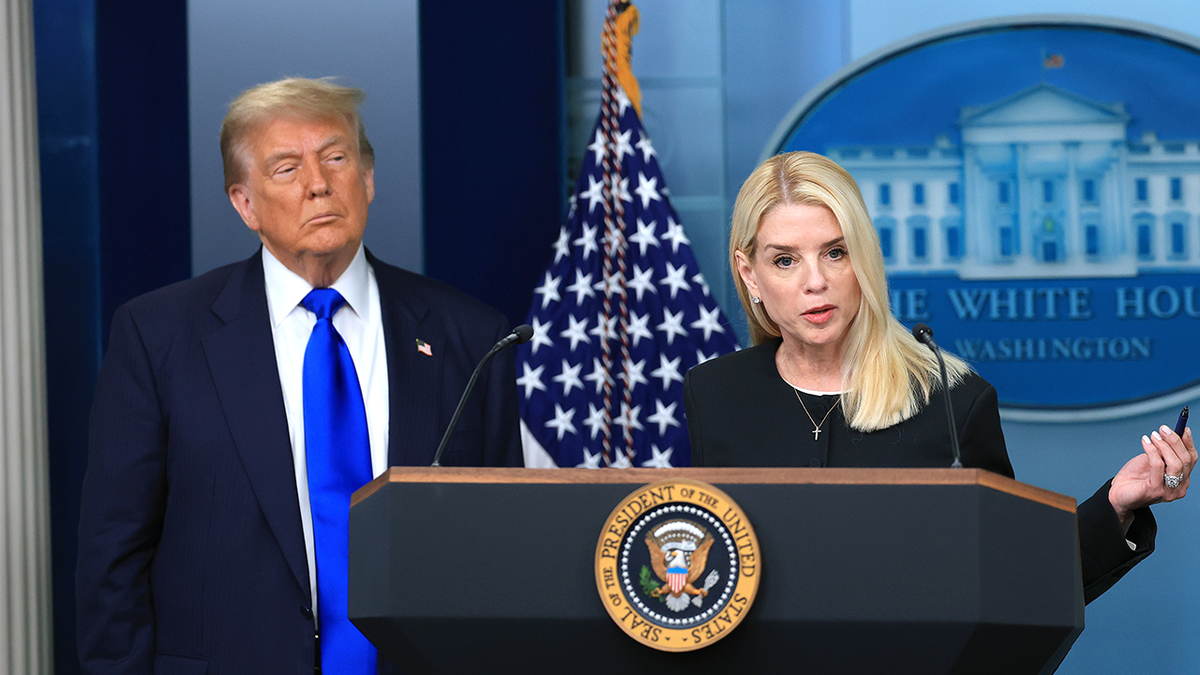
Attorney General Pam Bondi speaks alongside President Donald Trump on recent Supreme Court rulings in the briefing room at the White House on June 27, 2025, in Washington, D.C. (Joe Raedle/Getty Images)
Halligan’s appointment came as part of a series of maneuvers the Trump administration has made to bypass the Senate confirmation process and keep in place his preferred appointees in temporary capacities using loopholes in federal vacancy laws. Federal judges in New Jersey, California and Nevada have disqualified appointees in those states, and the New Jersey case is now pending before an appellate court. The issue could be bound for the Supreme Court.
Comey’s lawyers argued in court papers that Currie, the judge presiding over the issue, «should reject the government’s machinations.»
Comey is facing a charge that he made a false statement to Congress and James is facing a bank fraud allegation.
DOJ DEFENDS TRUMP TRUTH SOCIAL POST AS COMEY SEEKS TO HAVE CASE DISMISSED

Former FBI Director James Comey testifies before the Senate Intelligence Committee about his interactions with President Donald Trump and the Russia investigation on June 8, 2017, in Washington, D.C. (Cheriss May/NurPhoto via Getty Images)
CLICK HERE TO GET THE FOX NEWS APP
Both have pleaded not guilty and have argued their indictments should be tossed out on the grounds that Halligan was improperly appointed and that they were selectively and vindictively prosecuted.
If Comey’s and James’ charges were to be thrown out, it is unclear what would happen. The DOJ could appeal or attempt to bring them again, depending on how the courts rule.
Fox News’ Bill Mears and David Spunt contributed to this report.
justice department,pam bondi,judiciary,virginia,donald trump
INTERNACIONAL
Argentina reveals secret WWII files on Hitler’s henchmen who fled before, after the war

NEWYou can now listen to Fox News articles!
Multiple documents featuring some of the worst Nazi war criminals were released and declassified earlier this year by Argentine President Javier Milei. The more than 1,850 documents comprise thousands of pages detailing the South American country’s efforts to track and verify the whereabouts of thousands of Nazis who fled Europe after World War II.
The catalyst for the effort came from the Senate Judiciary Committee and Chairman Chuck Grassley, R-Iowa, who was credited by the Simon Wiesenthal Center for his efforts in getting Milei to release the documents.
Most of the materials relate to investigations carried out between the late 1950s and the 1980s and were digitized and made available on the nation’s General Archive website, along with secret, declassified presidential decrees from 1957 to 2005.
The original batch of documents released online is divided into seven large files roughly centered around the main Nazi criminals covered in them. There are multiple documents related to Adolf Eichmann, the engineer of the «Final Solution,» the plan for the extermination of European Jewry. He lived under the name Ricardo Klement around Buenos Aires until being captured by Mossad agents on Argentine soil and taken in a secret operation to stand trial in Jerusalem in 1960.
101-YEAR-OLD KRISTALLNACHT SURVIVOR WARNS CURRENT ERA ‘EQUIVALENT TO 1938’ ON ANNIVERSARY OF NAZI RIOT
Adolf Eichmann, in a bulletproof cabin, puts on earphones to hear the reading of the act of accusation against him, Dec. 17, 1961. He was in charge of the extermination of Jews in Poland and then organized the deportation and extermination of Jews in 13 European countries. (Keystone-France/Gamma-Keystone via Getty Images)
Eichmann’s case features prominently in the files and there is contradicting evidence that the leftist, populist government of Juan Perón not only knew Eichmann was in the country but also made efforts to protect him.
Multiple documents also exist detailing the lives of Josef Mengele, the «angel of death» doctor from Auschwitz-Birkenau camps who lived in Argentina and escaped to Paraguay and Brazil, where he died in 1979.
Documents detailing the hunt for Martin Bormann, Hitler’s lieutenant and right-hand man, as well as Croatian murderer, Ante Pavelic, deputy führer and defector Rudolf Hoess and the so-called «butcher of Lyon,» Klaus Barbie, received special attention in the files.
NAZI OFFICER’S DAUGHTER CHARGED AFTER STOLEN WWII PAINTING SPOTTED IN REAL ESTATE LISTING

Three SS officers socialize on the grounds of the SS retreat outside of Auschwitz, 1944. From left to right they are: Richard Baer (commandant of Auschwitz), Dr. Josef Mengele and Rudolf Hoess (the former Auschwitz commandant). Mengele escaped to Argentina, later escaping to Paraguay and Brazil. (Universal History Archive/Universal Images Group via Getty Images)
According to Harley Lippman, a member of the United States Commission for the Preservation of America’s Heritage Abroad and a board member of the European Jewish Association, the relevance of the release of the Argentinian documents cannot be understated.
«There are numerous questions that these documents can bring light to why a sophisticated society, far from the plagues of European antisemitism such as Argentina’s, agreed to hide Nazi criminals and their secrets for so long. What happened to the U-boats loaded with Nazi gold brought to the country and given to the authorities?» he asked.
«On the one hand, it is shameful that Argentina kept these documents a secret for so long, but on the other hand, we also need to acknowledge the enormous efforts being made by this government to make these documents public. While the historical significance is important, this is more important for Argentinians to be able to confront their demons as a society than for Jews,» Lippman said.
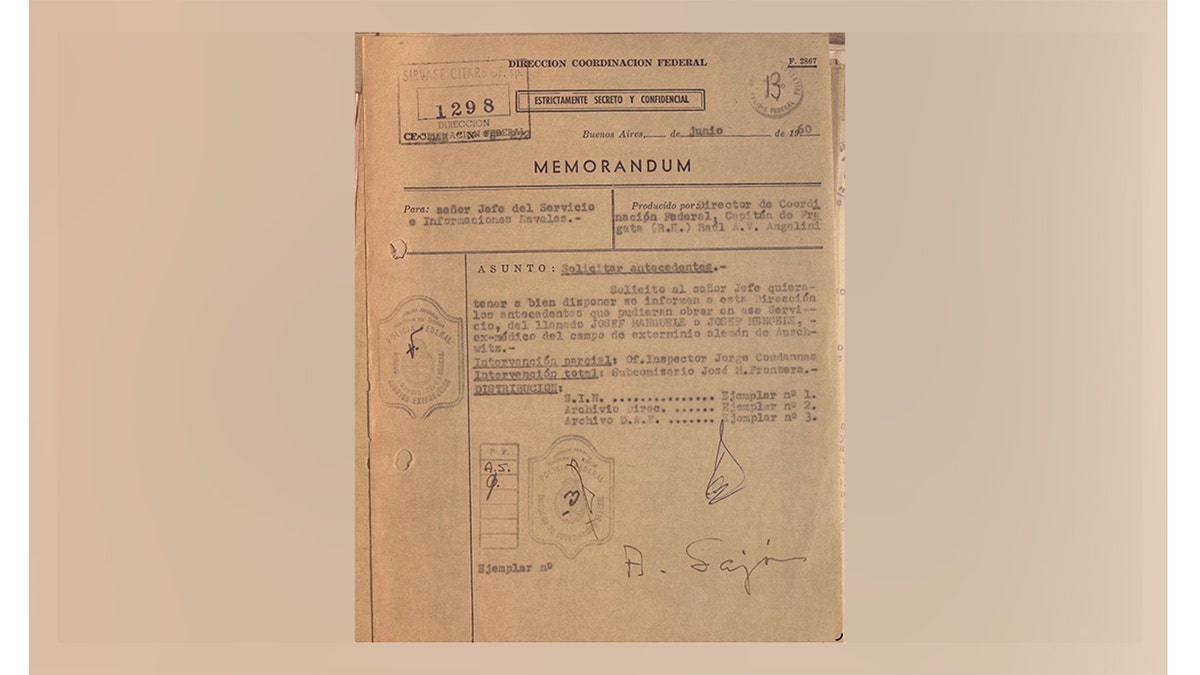
This 1950 Argentine federal police memo, marked strictly secret and confidential, seeks intelligence on Josef Mengele, the notorious Nazi doctor from Auschwitz, suggesting that Argentine authorities were aware of his possible presence or activity in the region at that time. (General Archives of the Government of Argentina)
Adding to the large reveal, in May, while the Supreme Court of Argentina was undergoing renovations and transferring document collections to museums, a forgotten trove of 83 boxes of Nazi documents was discovered almost untouched in the basement of the institution. Upon inspection, the crates revealed documents intercepted by Argentine customs in 1941, sent from the German Third Reich Embassy in Tokyo, Japan, to Argentina’s capital, Buenos Aires, aboard the Japanese steamer Nan-a-Maru.
The documents had been sent as personal effects of embassy personnel but were intercepted under orders of the country’s minister for foreign affairs in order not to undermine Argentina’s neutral position in the war. The shipment became the subject of a probe by a commission investigating «anti-Argentine activities,» which led to the seizure and possession of the crates by the country’s supreme court, where they remained for nearly 84 years.
The finding of the boxes revealed multiple materials intended to propagate and consolidate the Third Reich’s and Hitler’s ideologies in Argentina and South America, possibly in an effort to bring neutral countries under the auspices of Germany.
MILEI SCORES HISTORIC WIN IN ARGENTINA MIDTERMS, TIGHTENS GRIP ON CONGRESS
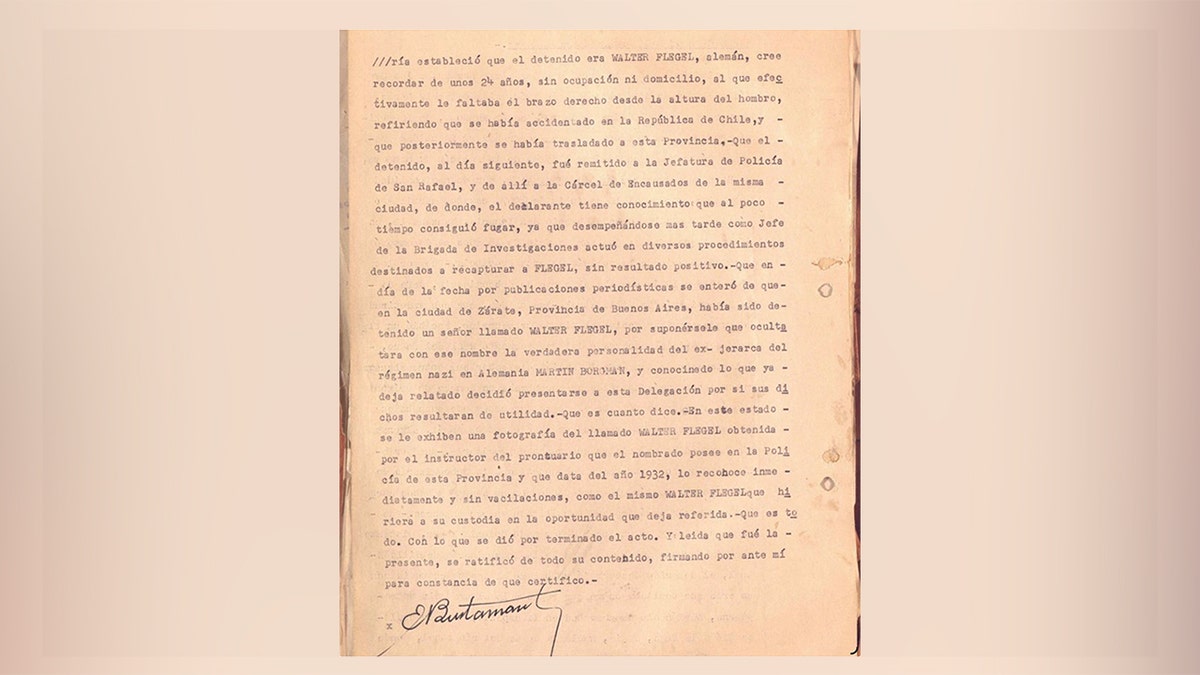
The document recounts an Argentine police report describing a German fugitive, Walter Flegel, believed by some to be Martin Bormann, Hitler’s former deputy, living under a false identity in Argentina. It was later proven that the lead was incorrect and that Flegal was not Borman. Earlier this year, Argentina President Javier Milei declassified and released over 1,850 documents detailing Argentina’s efforts to track and verify the whereabouts of thousands of Nazi war criminals. (General Archives of the Government of Argentina)
After opening the boxes along with prominent members of the country’s Jewish community, the court issued a statement saying that «given the historical relevance of the find and the potential crucial information it could contain to clarify events related to the Holocaust,» an exhaustive survey of all the material was ordered.
The contents of the crates have not yet been made public, but Milei’s office has said that once all the documents have been digitized, they will also be declassified and made available.
Argentina’s chief of the Cabinet of Ministers, Guillermo Francos, has previously said Milei gave the order «because there is no reason to continue withholding that information, and it is no longer in the interest of the Republic of Argentina to keep such secrets.»
«Jews after World War II lived a golden age of about 80 years where antisemitism had subsided, at least apparently, and they could be productive and contributing members of society. This has now ended — partially because of the genocide committed against Israelis by Hamas on Oct. 7, 2023, with world opinion projecting on Israelis and Jews the false role of perpetrators of genocide in the war in Gaza, but also by bringing back the same old antisemitic views that had been alive in Germany and before then,» Lippman says.
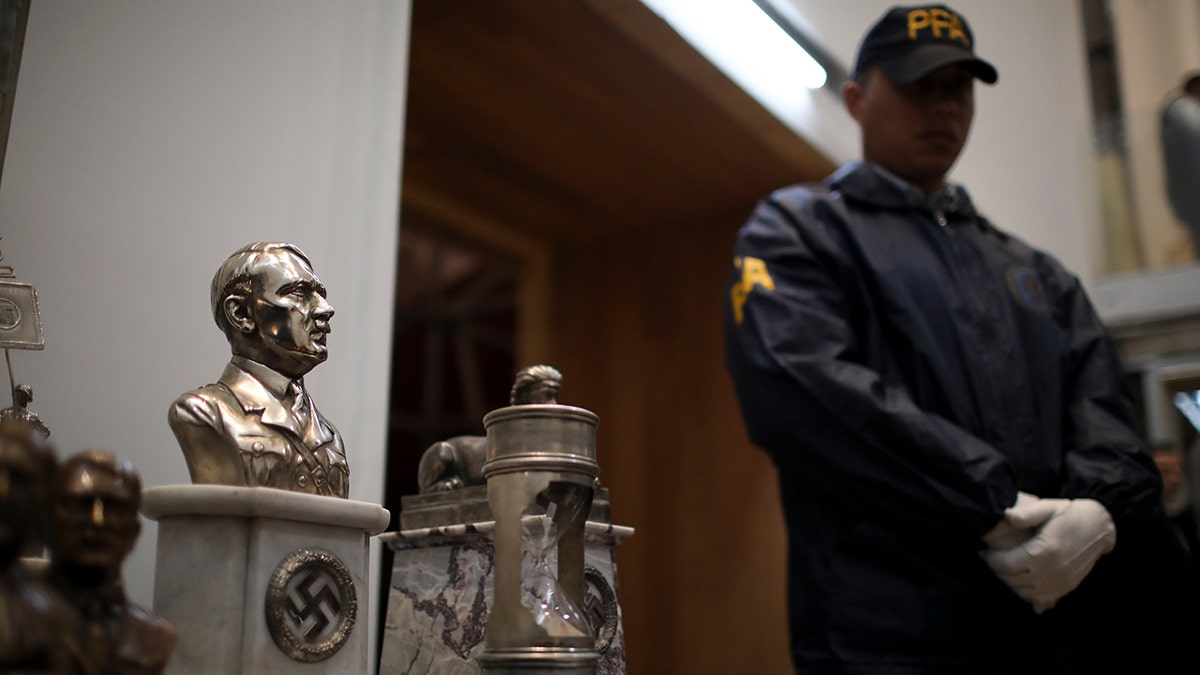
A police officer stands in front of a cache of Nazi artifacts discovered in 2017, during a press conference in Buenos Aires, Argentina, Wednesday, Oct. 2, 2019. Argentine authorities found the cache in a secret room behind a bookcase and had uncovered the collection in the course of a wider investigation into artwork of suspicious origin found at a gallery in Buenos Aires. (Natacha Pisarenko/AP Photo)
«The fact that many people under 30 do not know or understand [the meaning of] the Holocaust is part of the reason why antisemitism is on the rise again. «The Holocaust was the largest systematic industrial killing of humans in history. This happened only 80 years ago. Young people seem not to be able to grasp the scale of this, but these documents can bring back the memory of what the Holocaust really was,» he said, comparing the propaganda war currently faced by Israel and Jews under a progressive and projectionist guise.
CLICK HERE TO DOWNLOAD THE FOX NEWS APP
Beyond the lives of senior Nazis who escaped to South America on the so-called «ratlines»—possibly under the auspices of certain local governments—Lippman said the documents could also provide important information regarding the role played by Swiss and Argentine banks.
«The Holocaust was the greatest theft in history. Many Swiss banks [which were the depositaries of Jewish money] would not release funds to sometimes a sole survivor from a family who perished in the Holocaust without a death certificate for their loved ones. But Auschwitz did not issue death certificates — they only issued ashes.»
anti semitism,south america,world war two,israel,holocaust

 CHIMENTOS2 días ago
CHIMENTOS2 días agoWada Nara se despidió de sus hijas con un desgarrador mensaje al entregárselas a Mauro Icardi: «Que la pasen hermoso»

 POLITICA2 días ago
POLITICA2 días agoAxel Kicillof prometió no subir impuestos, pero montó un mecanismo de recaudación con Ingresos Brutos

 POLITICA2 días ago
POLITICA2 días agoEn Formosa cobran un impuesto a los camiones para poder circular: piden que el gobierno nacional intervenga





























